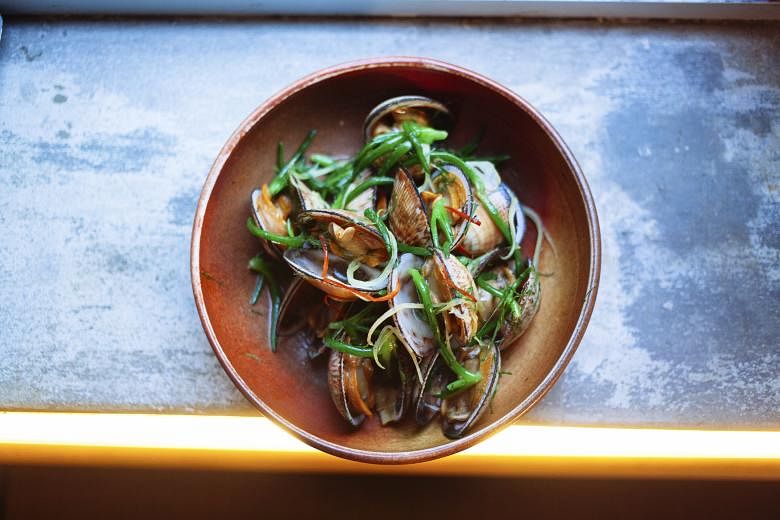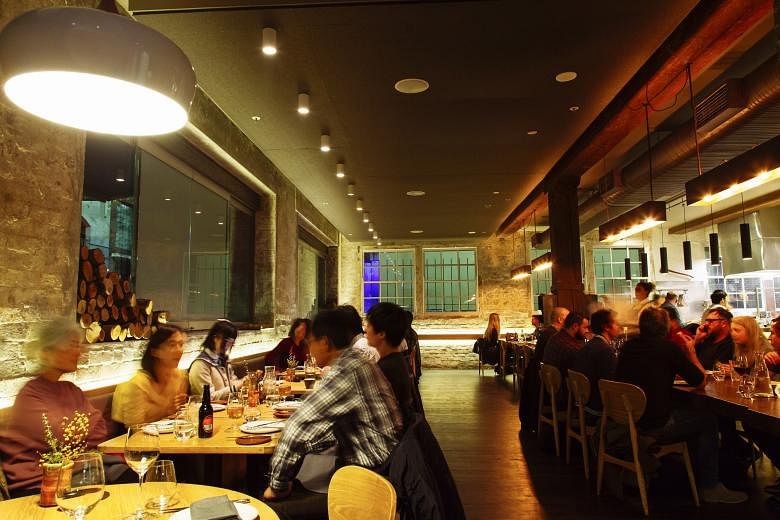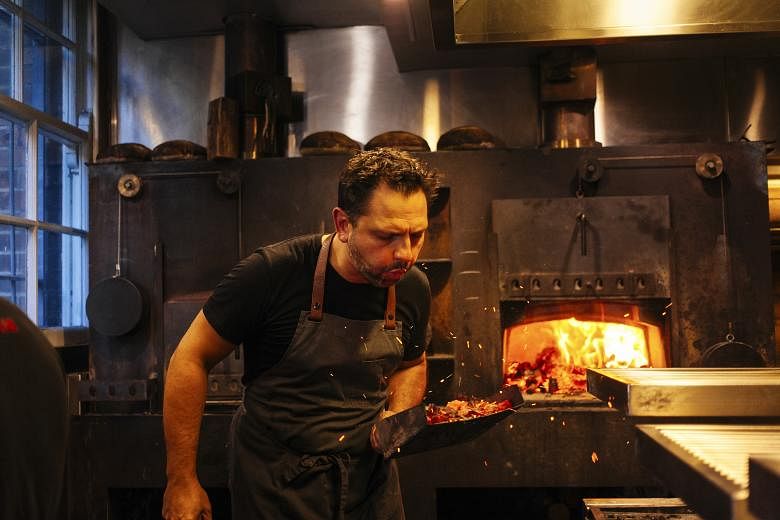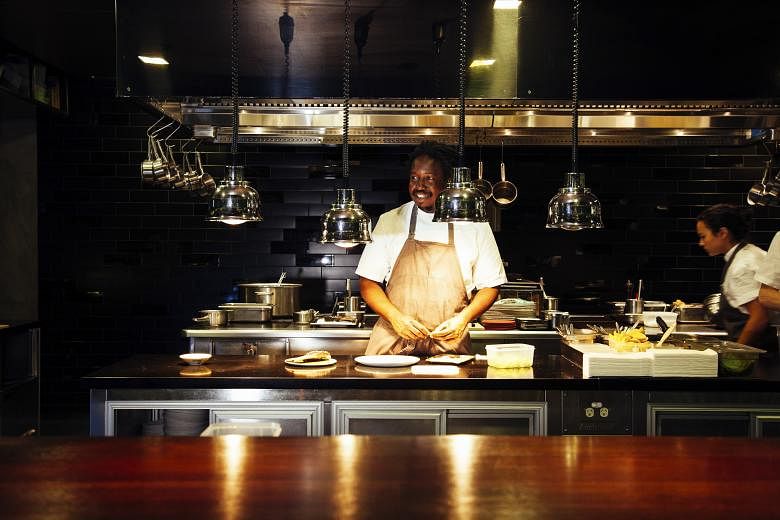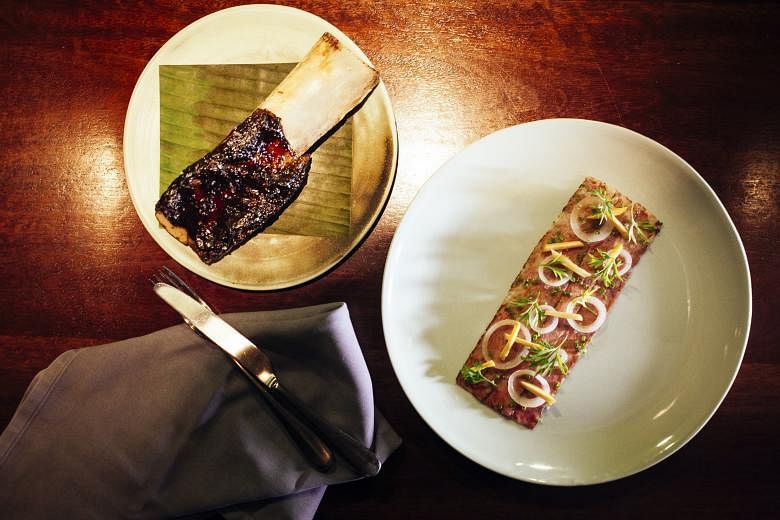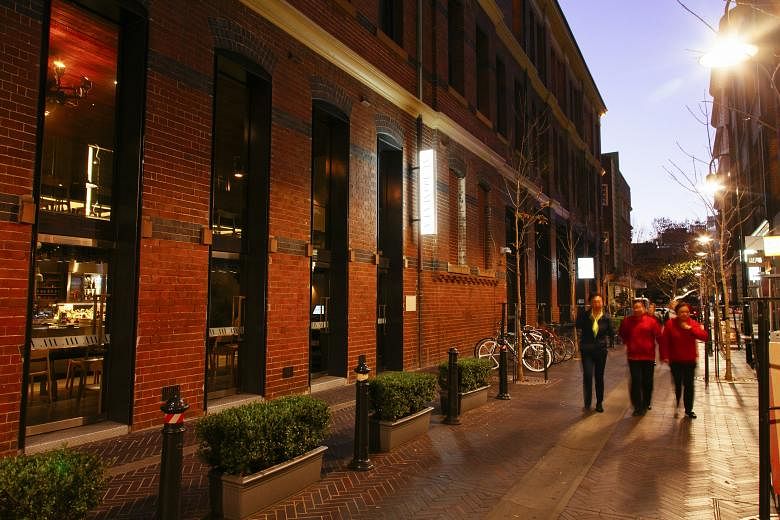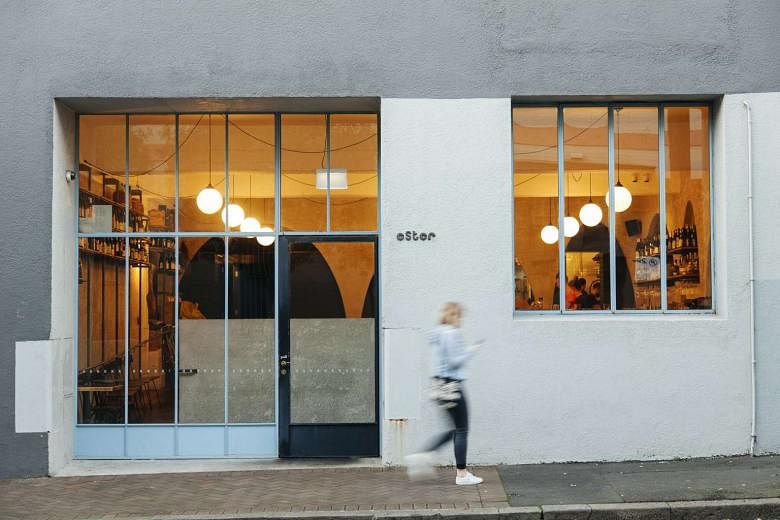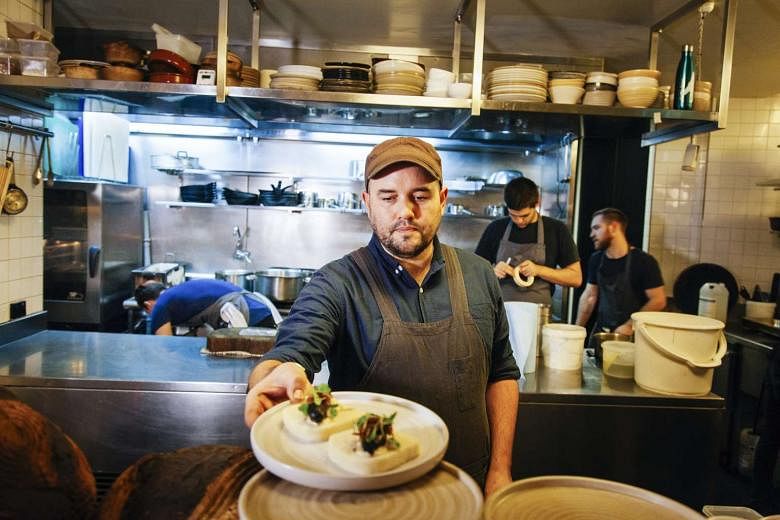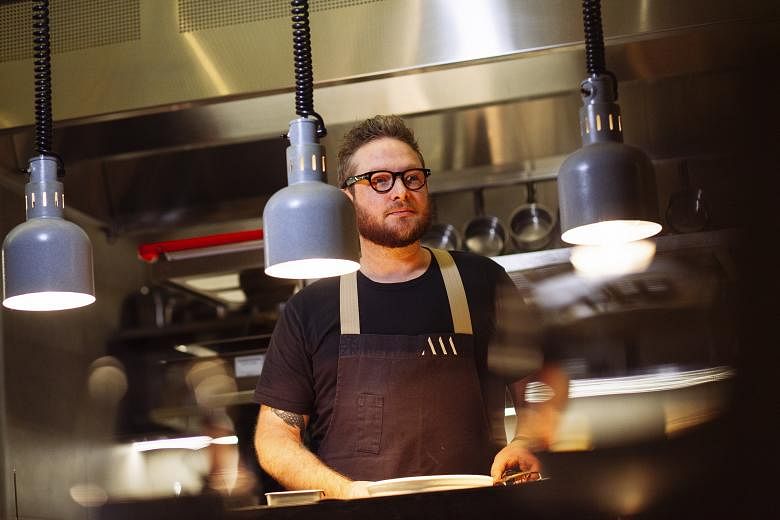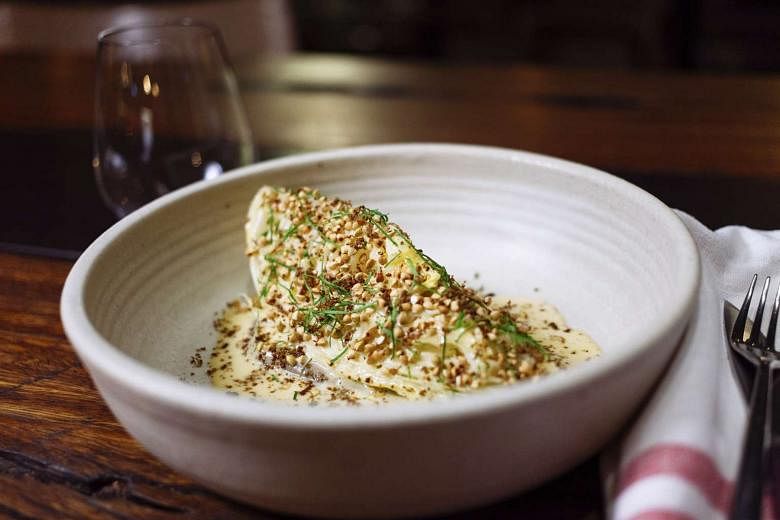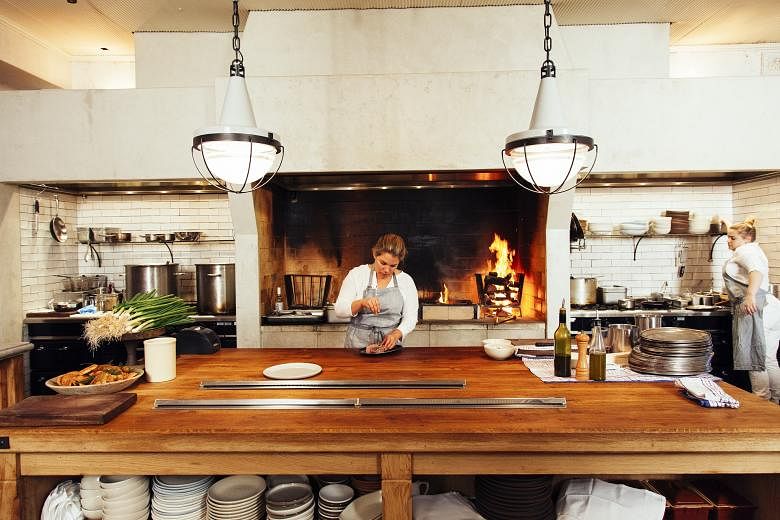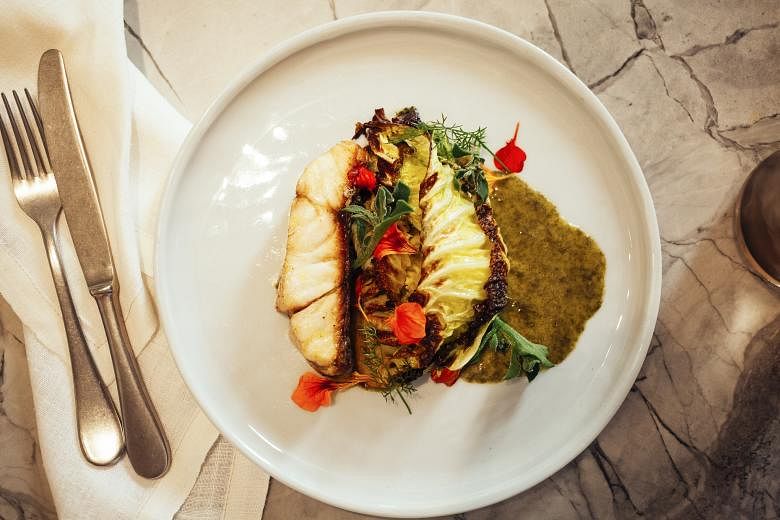SYDNEY (NYTIMES) - When I arrived here in April to check out this city's recent crop of chefs, I knew I wasn't at the centre of the culinary universe. That was more than 400 miles away, in Melbourne.
The week before, about 900 chefs, sommeliers, editors, writers and other muck-a-mucks from around the planet had converged on that city for the annual unscrolling of the World's 50 Best Restaurants list. Many of them were still in Melbourne, grazing, washing Champagne from their hair and causing a hashtag traffic jam on the freeways of social media. One Melbourne restaurant and another in the same state, Victoria, were basking in the warm glow of being named among the elect.
No restaurant in Sydney made the cut. One, Quay, had squeaked into position 95 on the extended list of 100. As for the Instagram and Twitter love, very little of it seemed to be spreading this far north.
And yet as I made my way around town, eating in restaurants whose chefs were all pretty new to the scene, I saw no black eyes. And if a week here didn't convince me that I was in the centre of the culinary universe, I didn't mind. The restaurants I liked best had qualities that are more enjoyable than a grasping for universal acclaim. Their service, atmosphere and a lot of the food were professional enough to let you know they took it all seriously but relaxed enough that you didn't have to take it quite as seriously yourself.
The world may not have its eyes on Sydney at the moment, but the five chefs whose cooking impressed me the most have global origins, cosmopolitan sensibilities, or both.
Conspicuously absent from their influences, for the most part, is Asia. That continent's cuisines, especially Chinese and Vietnamese, are all over the city and in suburbs like Cabramatta. They were a strong influence on the generation of chefs, including Kylie Kwong, Luke Mangan, Neil Perry and David Thompson, who gave Sydney a reputation as a great restaurant town in the 1990s and early 2000s, before Melbourne raised its hand.
Of course, a spectacular Chinese, Vietnamese or Korean restaurant may open next month. At the moment, though, Sydney's newer chefs are tilting toward North America and Europe.
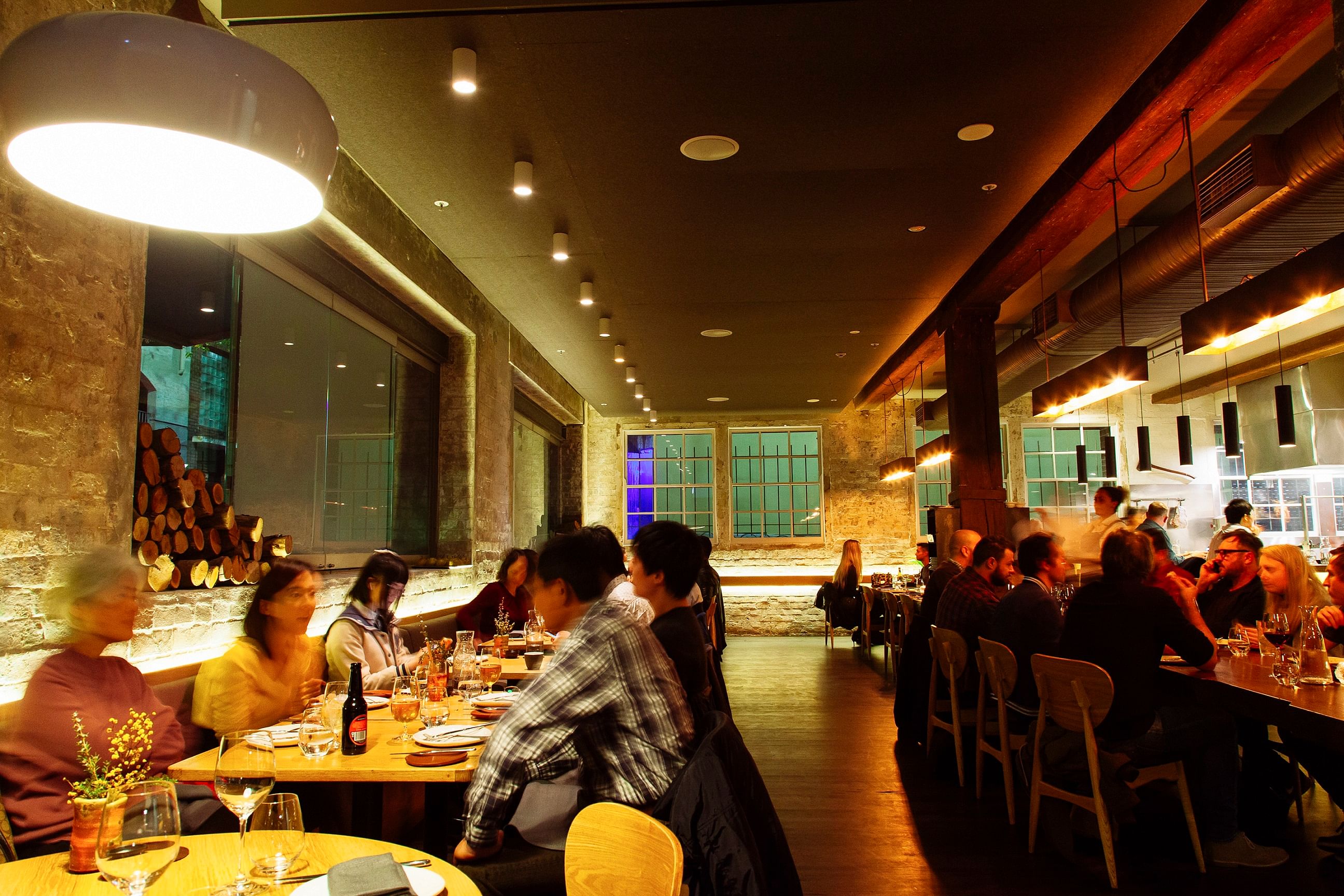
One of these chefs, Lennox Hastie of Firedoor, was born and raised in England and has built himself a kitchen where everything that is not served raw is cooked directly or indirectly over burning logs and embers in methods he learned over five years at Asador Etxebarri in the Basque Country.
Sitting at the chef's counter of this two-year-old restaurant, with my back to the view of a quiet, narrow block in the Surry Hills neighborhood, I got the full fire show. Grapevine, ironbark and fruit trees like peach and orange were going up in smoke. Periodically somebody would reach into a firebox whose interior looked like a mediaeval painting of hell and fill a scuttle with coals to set under one of the three stainless-steel grills. These were shiny and modern, in contrast to the sooty wood-burning stove in back, which might have been from another century. Red patches covered the forearms of one cook. He must have been new.
Hastie was at a butcher's station by the counter, breaking down whole gleaming fish and occasionally retrieving a rack of beef from a hook to slice off a steak on a band saw.
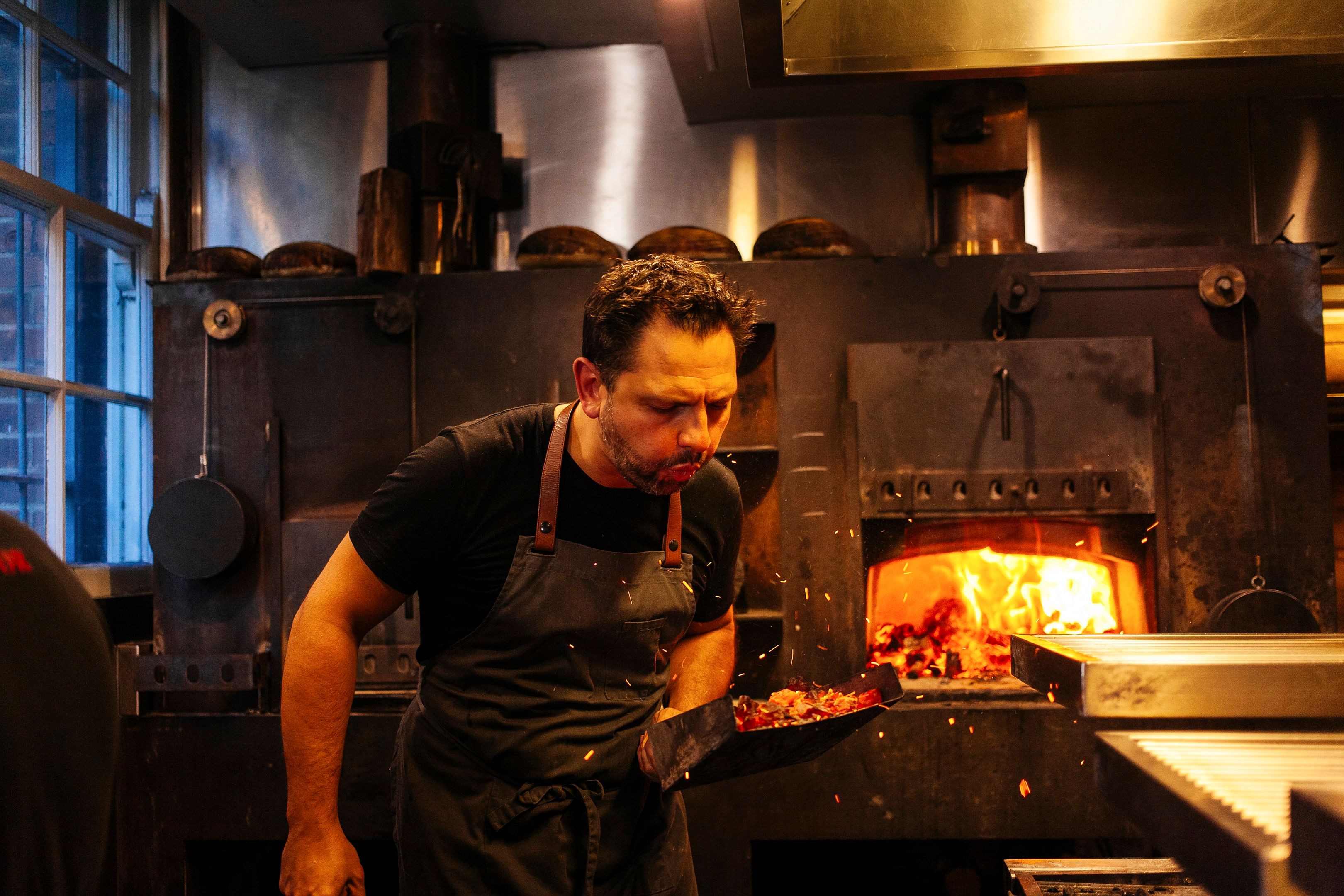
From this primal scene emerged cooking of almost incredible finesse. Nothing I ate at Firedoor was charred, and while smoke was a constant presence, what I noticed above all was how precisely the cooks controlled the fire's temperature.
Over a salad of shaved fennel and little cells of finger lime are slices of albacore, seared on one side just long enough to go white. A sea robin fillet was grilled high up over the coals until it was just done, juicy, very lightly smoky.
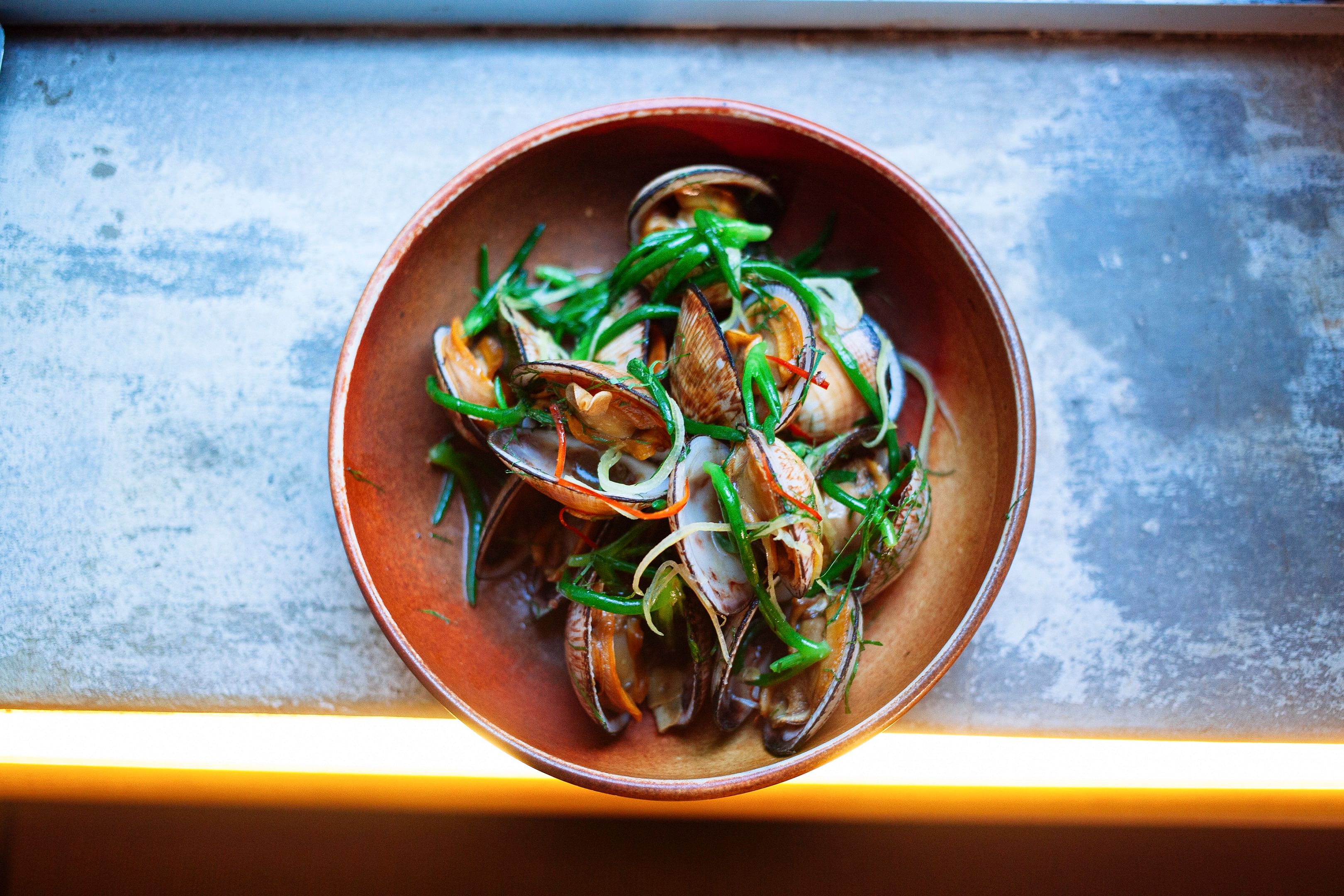
Pipi clams, tossed with threads of red chili and bursting pods of the native succulent karkalla, were piled into a pan that started out directly over the coals and then was quickly raised about 60cms above them. A marrow bone was roasted by the coals in the oven until it was on the verge of melting and begging to be mashed into grilled bread with some fermented chili and a few sprigs of peppery salad greens.
Momofuku Seiobo is not new - David Chang opened it in 2011 - but its chef is. Paul Carmichael took over in 2015 and has given the cooking a strong personal imprint. Raised in Barbados, Carmichael treats Australia as a Caribbean island that somehow got loose and wandered thousands of miles into the Pacific.
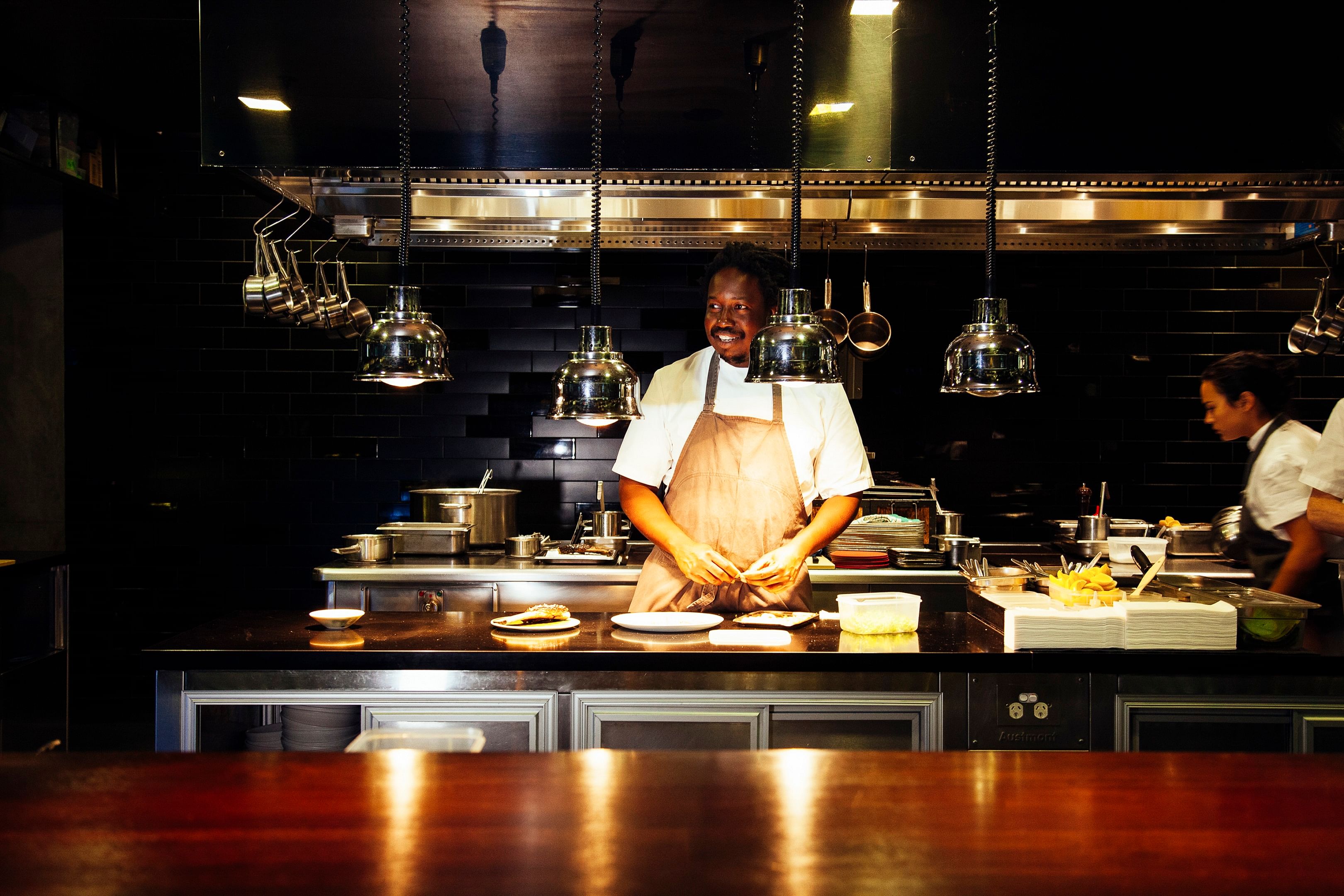
Seiobo lies along a corridor leading to a food court inside a casino. Carmichael had placed a few of his chips on island flavours when he was the chef at Chang's Ma Peche in New York, but at Seiobo he goes all in. His A$180 (S$188.88) tasting menu is exhilarating in part because he finds so many inventive ways to celebrate Caribbean dishes without distorting them. He leaves the roots on the food.
Bake, the Trinidadian bread that is not baked but fried, is topped with slices of lardo and local abalone instead of the traditional shark bits. There is salted fish in sofrito rice, and while he uses mulloway instead of cod, the taste is pure Puerto Rico.
There is griddled roti, otherwise known as "buss up shut," in the company of a charcoal-grilled Moreton Bay bug tail. Bugs are a species of lobster. Breadfruit is originally from the South Pacific but was planted all over the Caribbean as cheap food for slaves. Mashed with butter, it is a fixture on tables in Barbadian and other homes. Carmichael turns it into a song of home, serving a single soft absorbent piece soaked in a butter sauce that's amplified by more breadfruit - dried, toasted and fermented.
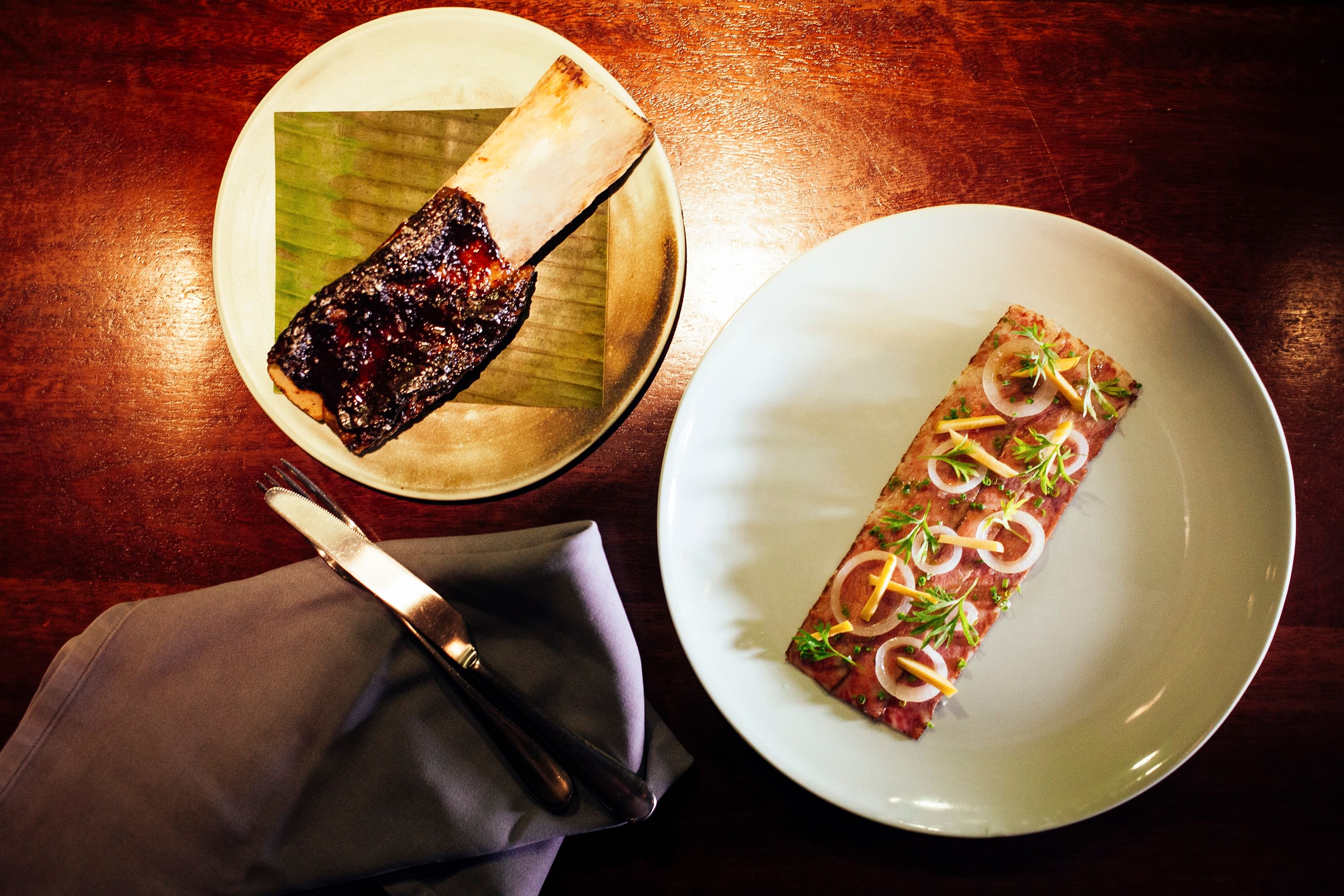
Part of the excitement of Seiobo is that everybody, from high rollers to far-flung restaurant critics, gets a little messy. Some dishes you want to eat with your hands. Others leave you no choice. Upstairs, people may be breaking even at blackjack in a zombie trance, but everybody who has a perch at Seiobo's tasting counter is wide awake.
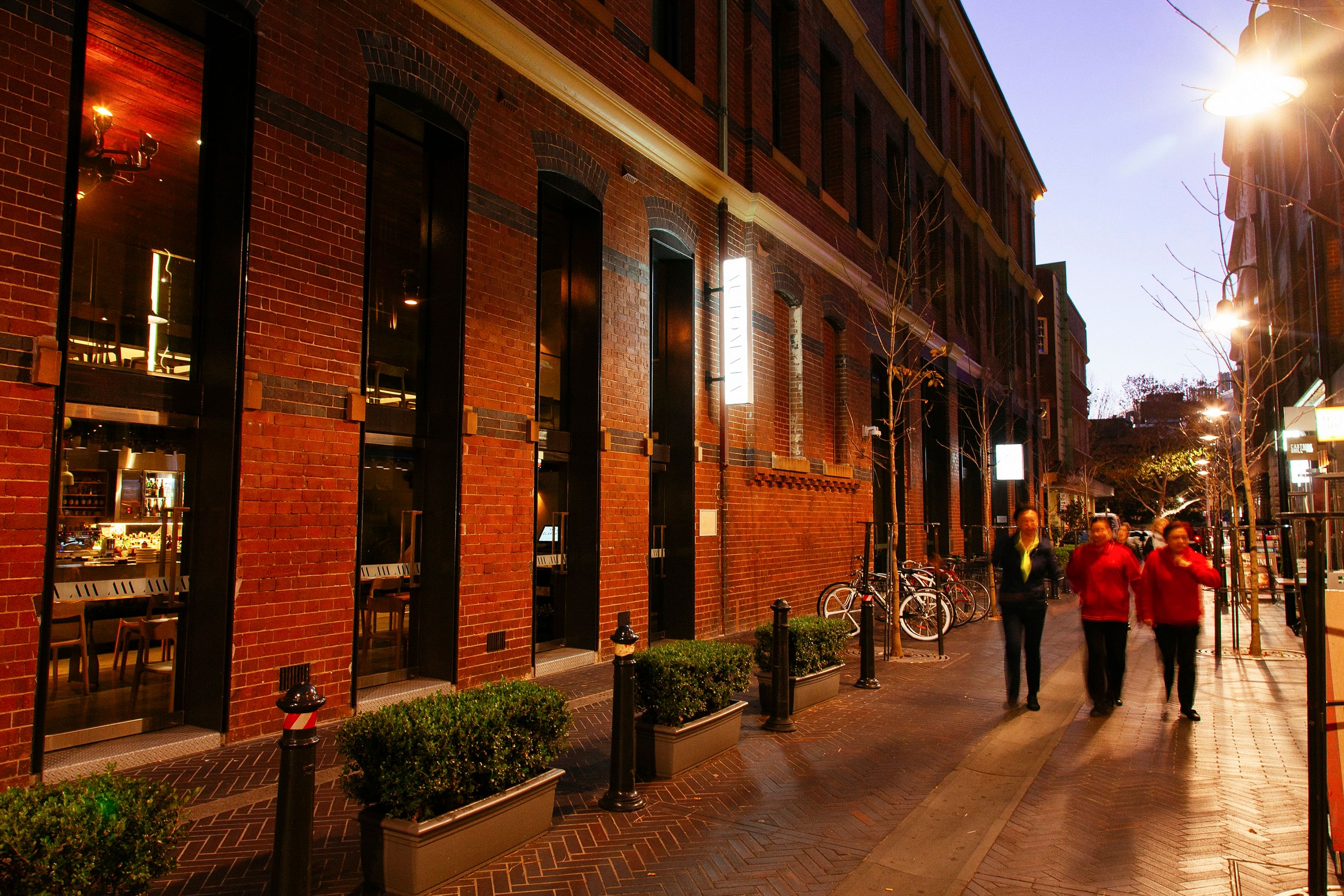
Clayton Wells is a homegrown product of Australia. He began his career in Sydney, then cooked for several years at restaurants in London and even got in the obligatory stint at Noma before coming back as sous-chef at Seiobo, before Carmichael took over. The Momofuku approach left a mark on Wells' cooking that's evident at his year-old restaurant, Automata.
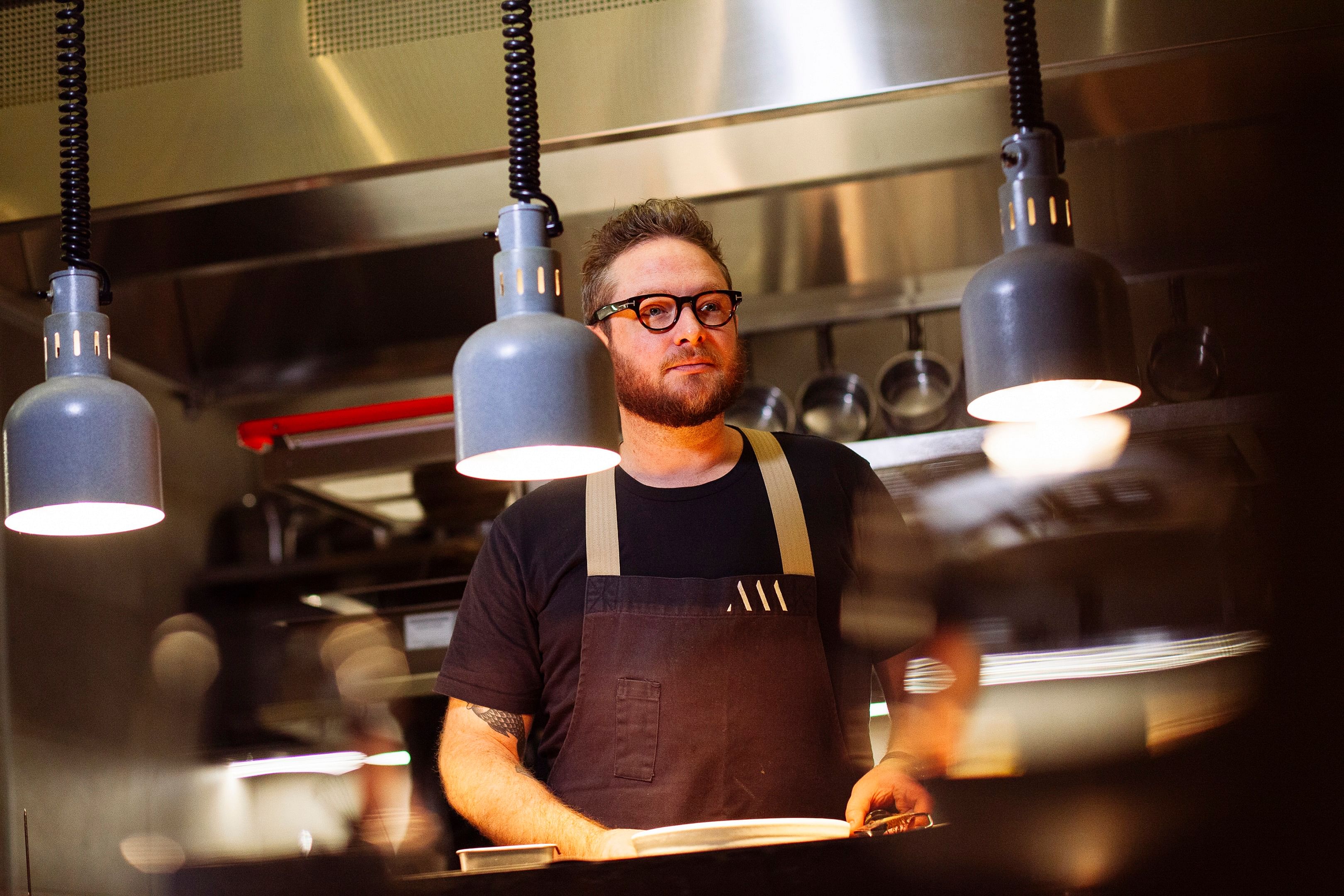
The dining room, on the ground floor of the Old Clare Hotel, is done in stainless steel, blond wood and concrete with some charcoal lowlights - a Changian palette. The space is wider than it is deep, with a long communal table taking up most of the floor. Everybody gets the tasting menu, a restrained five courses for a restrained A$88.
Wells folds scraps of modernist technique into his cooking, but they're invisible. First up was a wonderful little bouquet of rosemary-smoked enoki mushrooms wrapped in what tasted like lardo but was a thin sheet of smoked pig tail. Then came a grilled bug tail and sweet, jellylike persimmon. The tail was minty with dried shiso and salty from oil made with umeboshi, preserved plums. There were just a few flavours, but they echoed and multiplied.
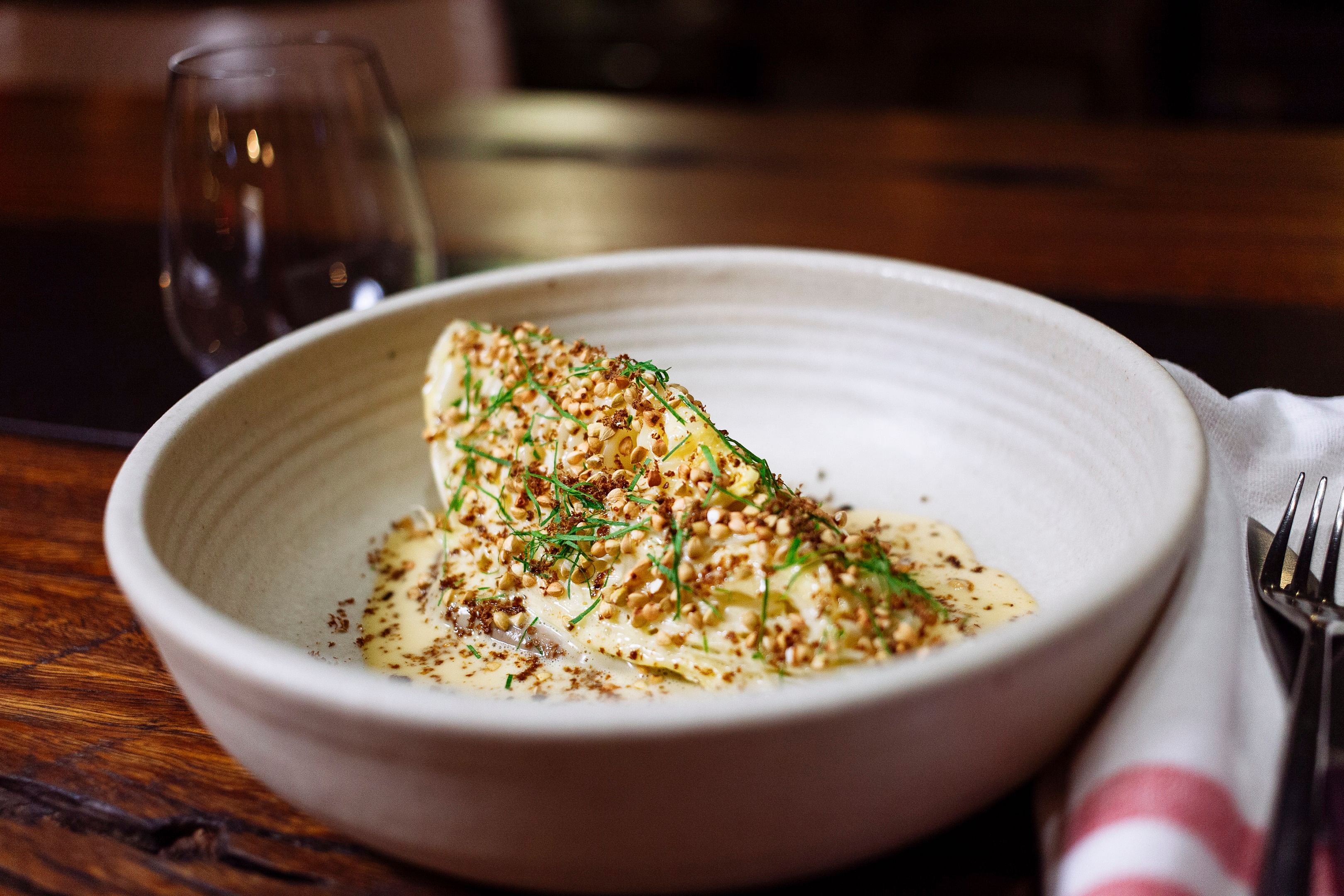
Up next was some of the sweetest and least cabbagey cabbage I've ever tasted. Mushroom puree was hiding under it, and mushroom butter worked its way into every crevice.
The chef of Fred's, open since October, is an American named Danielle Alvarez, who left Florida to attend Alice Waters' finishing school and now casts a California eye on New South Wales ingredients. Her style of cooking is a natural fit for Sydney, with its Mediterranean climate.
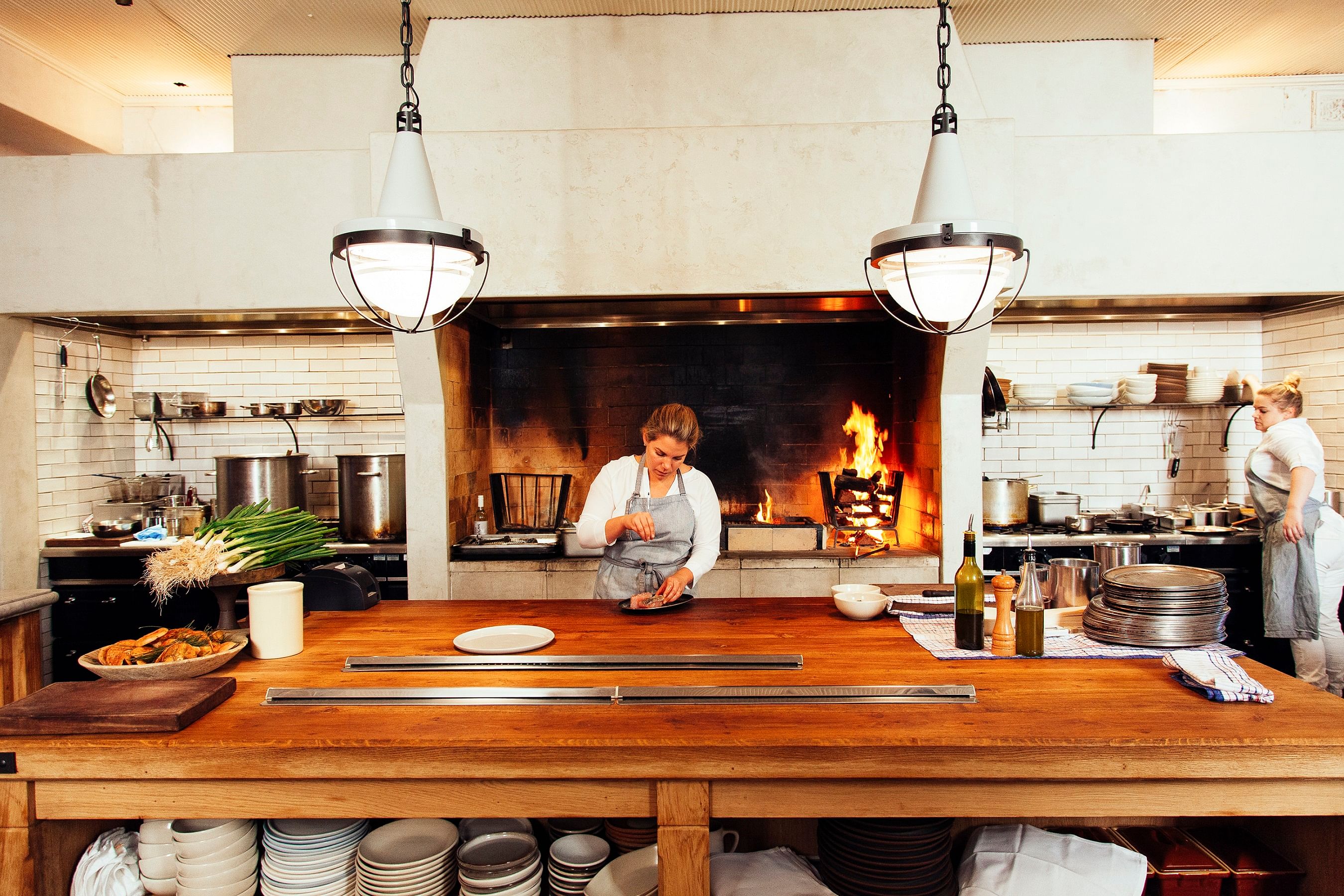
The centrepiece of Fred's dining room is an open kitchen that looks like the set of a cooking show. On either side of a gaping hearth and a smaller wood oven are two marble-topped islands adorned, back in April, with big bowls of peppers, tomatoes, eggplants and herbs. There are chairs at the islands. If this were television, this is where the judges would sit, but at Fred's the seats go to paying customers.
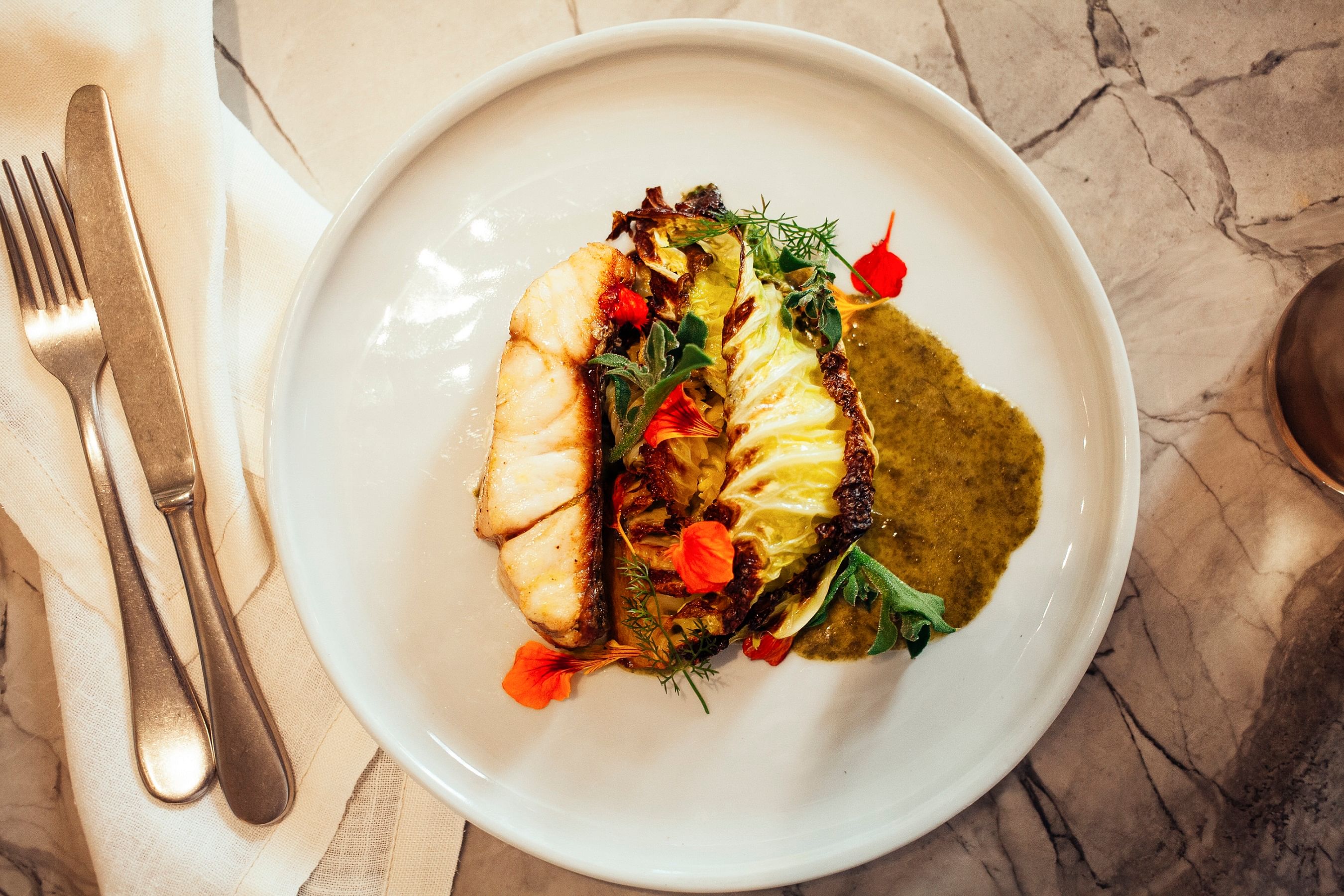
When Alvarez throws sweet wood-roasted red peppers, pale cucumbers, white anchovies and fluffy fresh cheese together with shards of fattoush, the Mediterranean seems to be on her mind. For sure it was on mine as I ate sweet sand whiting with a rough salsa of parsley leaves and lemon peel spooned over it. Alvarez already has a name around town for her skill with lamb. She cooks this extraordinary locally raised meat as if it were the reason she moved to Australia.
Among this peripatetic generation of chefs, Mat Lindsay is the homebody. He learned his trade in Sydney and scours his native landscape for ingredients. Yet his cooking at Ester is firmly in the modern, international style. He could open a pop-up in Copenhagen, and the only question he'd get would be: "Where do you source your kangaroo?"

A muscular character dressed in black, Lindsay stands at the kitchen pass and communicates with his employees by clapping his hands. I never figured out the difference between a single and a double clap, but the people who work at Ester, all of them in aprons, seemed to know.
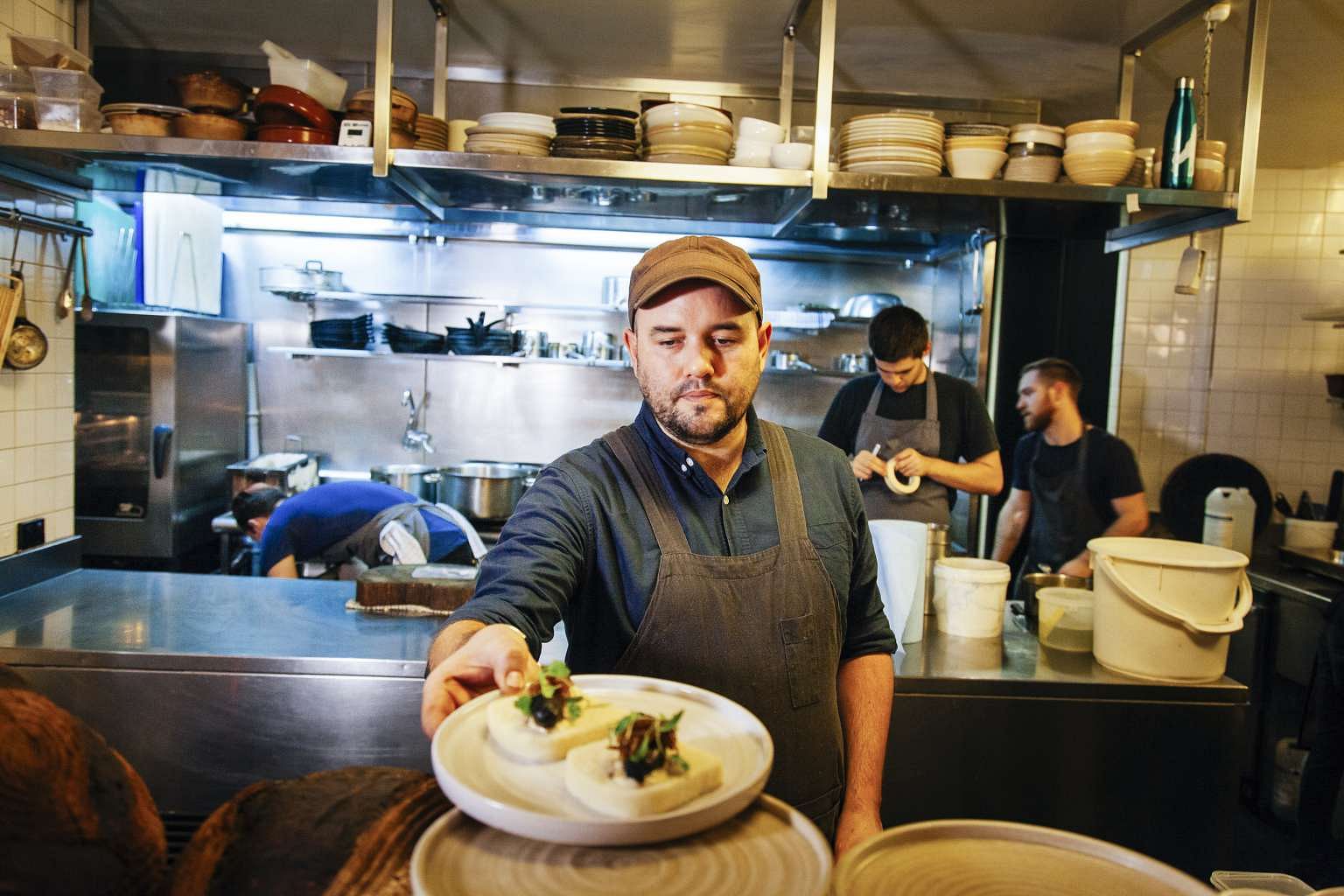
About half the customers were ordering a la carte; I went along with the other half and got the set menu for A$82. This brought me more plates than I could count, and I didn't regret any of them.
Sometimes Lindsay catered to hometown tastes, as in the fine blood sausage mini-sandwich, modeled on the ubiquitous if mostly uncelebrated Australian snack of a sausage link on a slice of white bread. Other times he adopted the visual style of New Nordic chefs, plunking delicious Hasselback potatoes into a little saucer of butter made with smoked whey.
As for the kangaroo, it was dried into a sweet jerky, then fried and tossed with macadamia nuts, fried saltbush leaves and muntries, a pickled native berry. The inspiration seemed to be Thai, with local products standing in for pork or beef, peanuts and basil, and it was fantastic. So was a dessert with the unpromising name "three milks". Sheep are responsible for the yogurt, cows for the panna cotta and goats for the dulce de leche that are layered one over the other.
Do Ester, Firedoor, Automata and Fred's deserve the global recognition that Seiobo already has? No question. And they might get it, although none of the chefs seem to be overly concerned about that.
Apart from Seiobo, these restaurants don't force anybody to take them seriously by framing the cooking inside expensive tasting menus. They all let you stroll in, eat a couple of delicious things and be on your way, if that's what you want.
Serious food in a casual setting isn't new to Sydney, but these chefs have brought things down to an even more unassuming pitch.
It may be a pitch that doesn't register with global list compilers. The problem with any effort to boil the world's food scene down to 50 addresses, or even 100, is that there are just too many good restaurants scattered all over, including Sydney. As problems go, this one isn't worth complaining about.
